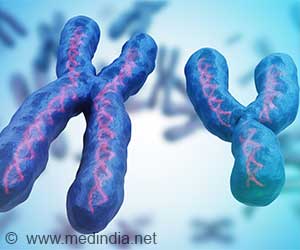Artificial blood vessels that resemble those in patients with Progeria have been developed in the laboratory to accelerate drug development
- Patients with progeria develop a disease of the blood vessels which contributes to their early death
- Scientists have developed a 3D model of blood vessels that resemble the diseased blood vessels of progeria
- The model can be used to screen medications for the treatment of progeria
TOP INSIGHT
A laboratory model of blood vessels has been developed that can be used to screen and accelerate the development of drugs for the treatment of progeria
There are currently only two mouse models of progeria that reflect the heart and blood vessel disease in progeria patients and they have their limitations. The limited number of patients suffering from the disease also makes it necessary to find laboratory models to expedite the process of finding new treatments for the condition. The artificially developed blood vessels provide a 3D model to study the link between the disease and cardiac aging in progeria patients. The effect of drugs on the blood vessels can also be studied.
The smooth muscle cells for the model were produced from human induced pluripotent stem cell (iPSC) obtained from a progeria patient. The endothelial cell layer, the inner cellular lining of the blood vessel, was derived from cells from a healthy donor. The blood vessels showed properties similar to those of a progeria patient after four weeks, which included:
- Reduced vasoactivity
- Increased thickness of the middle muscular layer
- Increased calcification and apoptosis
These findings were as compared to a similar model made from cells of a patient without progeria.
The scientists also tested the drug everolimus on the vascular model. Everolimus has been suggested to provide some benefit in progeria, based on previous testing on 2D cell cultures. When everolimus was tested on the vascular model, it improved the function and increased the expression of smooth muscle contractile proteins. It, however, did not improve the calcification.
The vascular model thus appears to have a promising role in the screening of new drugs for progeria. It could also prove to be useful to study other cardiovascular diseases associated with aging that brings about similar changes in the blood vessels. Several issues have yet to be addressed, for example, the vessels do not show accumulation of lipids, in contrast to what is noted in progeria patients. The model contains only smooth muscle cells from progeria patients and not the endothelial cells. The system is also not connected to any organ or exposed to the complexities of the human system.
- Atchison L, Zhang H, Cao K, Truskey GA. A Tissue Engineered Blood Vessel Model of Hutchinson-Gilford Progeria Syndrome Using Human iPSC-derived Smooth Muscle Cells. Scientific Reports, Aug. 15, (2017). DOI:10.1038/s41598-017-08632-4
 MEDINDIA
MEDINDIA




 Email
Email










